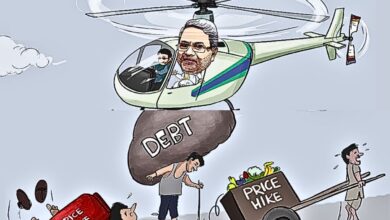Four tips for delivering the best interview presentation possible
You were already feeling pretty nervous about your upcoming interview. Then you were asked to give an interview presentation. It’s one thing preparing to answer some tricky questions, but preparing to give a presentation as well? Well, that’s less familiar territory for most people.
As you progress higher up in your career into more senior roles, interview presentations are something which will become more of a regular occurrence. In fact, we are now seeing recruiters building in use of interview presentations for a number of roles at entry level upwards. Therefore, for the sake of your current and future interview success, it is important that you tackle this skill sooner rather than later.
So, why are you being asked to give an interview presentation?
By asking candidates to deliver an interview presentation as part of the process, the interviewer is looking for proof that you 1. Can do the job, 2. Have strong communication skills, 3. Are organised and 4. Are diligent. Moreover, if you take the time and effort to prepare a presentation that showcases all of the above, you will also demonstrate your commitment to the process and enthusiasm for the role. With this in mind, how can you deliver the best interview presentation possible?
1. Prove you can do the job
One of the reasons you have been asked to give a presentation in your interview is so that the interviewer can feel confident in your ability to do the job at hand. You, therefore, need to use the presentation to demonstrate just that. Where do you even start?
- Understand the task: Before you do anything else, make sure you are absolutely clear on what you are being asked to do and what question you are required to answer via the presentation. You must re-read the brief, double check with the recruiter that you have interpreted it correctly and don’t hesitate to ask them any questions. The recruiter will be in regular contact with your interviewer and can help clarify anything you’re not sure of. Better to check now than not check at all.
- Demonstrate your skills: As I mentioned before, this presentation is testing for key competencies. Which competencies are these? Revisit the job description, highlight the required skills and incorporate these into your presentation.
- Do your research: Now look at the business objectives of the company, and if possible what has worked/hasn’t worked before. For example, are there any major industry or company changes that would affect the way in which somebody would usually approach this assignment?
Take the time to understand this task and tailor your approach according to the skills required and the company information to hand. This will prove your suitability for both the role and the organisation.
2. Demonstrate your written communication skills
Now you know what you want to say during your interview presentation, think about how you are going to say it using your presentation slides. Even if it’s not a core part of your role, written communication skills will prove important to many day to day tasks, for example when sending emails, giving presentations, setting meeting agendas or putting together briefs for a project.
- Structure your presentation: The first slide should give an overview of the contents of your presentation. Your introductory slide following this could contain a “grabber” i.e. – an interesting fact, quote or statistic relating to your presentation topic which will make the interviewer sit up and take notice. Each slide following that should provide a headline of what that slide is about, then either a great visual (preferably in my view) or a few succinct bullet points which you are able to talk around and provide further detail on.
- Keep it concise: When I say succinct bullet points, I mean one-two sentences per slide and no more. Someone once told me that presentation slides should be like road signs. They should contain enough information to get people’s attention, but not so much that they are distracted.
- Know your audience: You may be presenting to an interview panel with different areas of expertise, so research what these areas are, and make sure what you have written is relevant and engaging for all. For this purpose, keep the language simple and avoid using too much jargon.
- Double check the contents: Next, always ask somebody else to check over what you have written and that the purpose of what you are trying to communicate on each slide is clear.
In doing the above, you can make sure the contents of your presentation are clear, informative and a reflection of your strong written communication skills.
3. Showcase your verbal communication skills
It’s one thing having good written communication skills or being good at putting a slide deck with impact together, but all of this will go to waste without a strong delivery. Being able to communicate clearly and in an engaging way verbally is important to all of us, and your interviewer will be assessing your face to face communication skills throughout your interview presentation.
- Don’t read from a script: Instead, reiterate the key points from each slide, and then talk around them in more detail. If you practice what you are going to say beforehand, this should become ingrained, but bring verbal prompts in the form of cue cards just in case. By avoiding spending the whole presentation reading from a piece of paper or slide, you will allow yourself to make eye contact and gesticulate as you talk, thus engaging the interviewers and further building rapport. At the end of the presentation, reiterate and sum up the key messages you want the interviewer to remember.
- Practice your delivery: When looking at your delivery, I would recommend either practicing your presentation in front of someone who can give you feedback, or simply recording yourself speak or even delivering it to yourself in front of a mirror. Critically assess the indicators of confident communication; for example speaking pace, tone and body language. Time how long it takes you to deliver so you have a reference on where you should be at which points in your presentation so that you don’t over-run on your time slot. If you do, you may lose the full impact of your presentation and thus affect your overall performance in the interview.
- Calm your nerves: If you get nervous when speaking publicly, take steps to calm these nerves both when practicing and on the day of the interview. Take deep breaths, don’t rush your sentences, and remind yourself that the interviewers are just people who have been in your shoes before. What’s more, they’re not trying to trip you up. They want you to succeed, not least because sitting through a bad presentation is awkward and a waste of time! But also because they have faith in you and your strengths as a successful candidate. Why else would they invite you in for an interview?
In practicing and getting into the right mind-set before your presentation, you can communicate with conviction and engage the people in front of you.
4. Show that you are diligent
Finally, the interviewer will want to see evidence during your interview presentation that you are diligent, organised and conscientious in the way you approach tasks, and that you have high attention to detail.
- Plan for the technology: Will you be using their devices or one of your own? Make sure you ascertain this beforehand, and know how to use this device. Ask someone to have checked your slide deck (if using one) beforehand to ensure everything works.
- Bring a back-up with you: Even if you are presenting this slide deck on your own device, take a backup copy on your USB and email it to both yourself, and to the recruiter to pass onto the client. You should also bring printed copies to hand out to all of the interviewers. In the worst scenario this means you have a Plan B and could still deliver your presentation effectively.
- Stay conscious of time: Find out how long the presentation needs to be and make sure you don’t run over. When practicing your presentation, remember to time it and leave room for questions at the end.
- Try to be on brand: Look at the fonts and colours on the company website and use these in your presentation. You could also try to find existing presentations and webinars on their website and match the format.
- Double check everything: From the formatting, to the layout, as well as the spelling and grammar. Get somebody else to proof your presentation for you too.
The above tips all hinge on giving yourself enough time to prepare, get feedback and ask questions on anything you’re unsure of. In taking the time to plan a well-researched, tailored and strongly delivered interview presentation, you demonstrate to the interviewer just how passionate you are about this role, moreover, why they should be just as passionate about you too!




